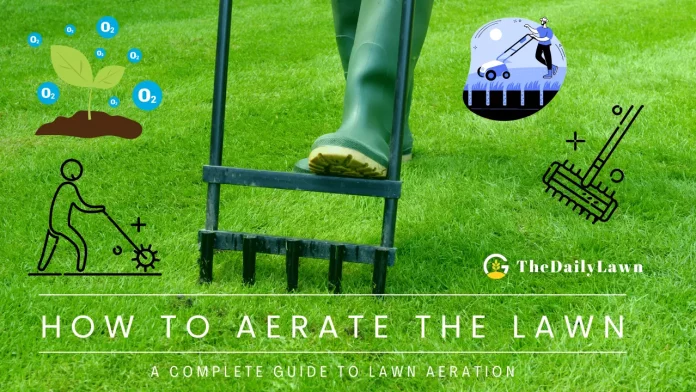If you ask someone about the most common lawn care mistakes, most professionals will answer about not aerating the lawn timely. Indeed, most lawn owners never mind keeping their lawn without aerating it for years. But believe me, your lawn will never have good health and a lush green look if you don’t aerate it. So, if you don’t know how to aerate the lawn, it’s time you should learn it.
Aeration is nothing but a very simple process of making holes all over the surface of your lawn. It ensures proper air, water, and nutrient circulation as they can reach deep in the mid, and the roots get the chance to have enough water and nutrients. Besides, aerating the lawn before fertilizing helps the fertilizer work at its most.
There are many different ways you can aerate the lawn. Today, we’ll talk about all those ways. But first, let me introduce you to the concept of lawn aeration and why it is essential. Then I will disclose the basic types of lawn aeration systems and how to aerate your lawn.
What is the Lawn Aeration?
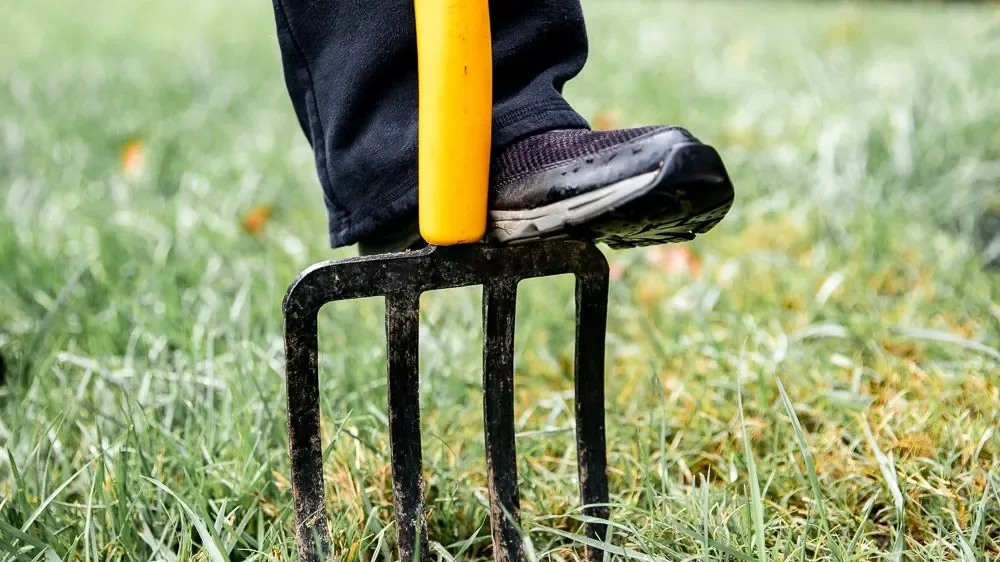
Well, to get rid of this undesired soil state or soil compaction, aeration will work as the best solution. It is a process to create lots of small holes in the soil so that vital elements such as water, air, and nutrients can enter the grassroots.
The aeration process generally increases breathability. And it helps the root to grow, ideally getting the highest level of nutrients. As a result, your lawn becomes livelier, and the grasses will be healthy. But you cannot aerate the lawn at any time or in any way. There are specific times and processes you should follow while aerating the lawn.
Why Should You Aerate the Lawn?
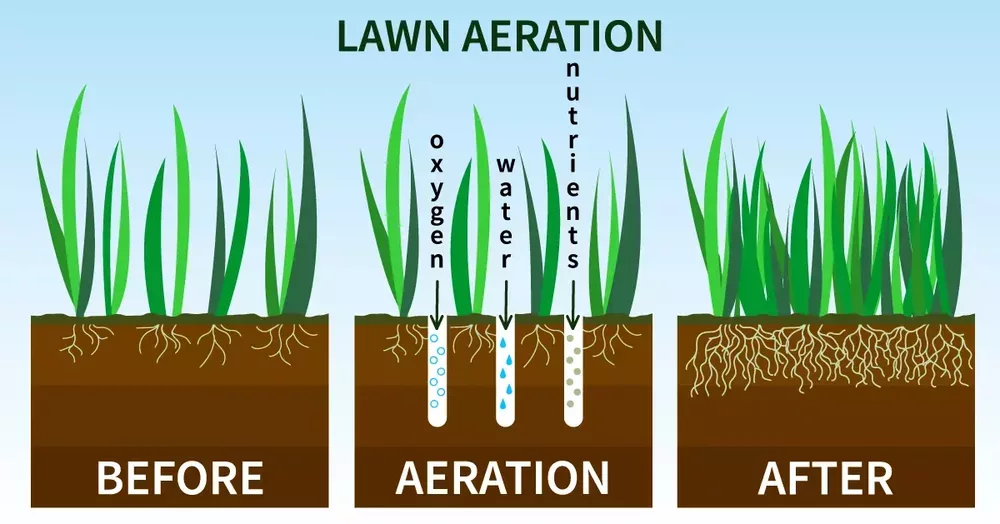
- Alleviating soil compaction is the fundamental reason for aeration. It simply breaks the compacted soil pieces.
- Your lawn also needs fresh air, especially inside the ground. For that, lawn aeration is essential.
- You need to aerate the lawn regularly to strengthen the root of the grasses.
- Aeration helps the grass root to grow deeper into the soil.
- The process aids the roots in absorbing nutrients. So, the fertilizers you will apply will work if you aerate the lawn timely.
- Due to aeration, unreachable water gets easily accessible to the grassroots.
For sure, aerating the lawn is not a difficult task. But it can bring numerous benefits to your lawn. So, if you don’t aerate the lawn for a long time and face problems regarding poor growth and unhealthy grass, you should do it as soon as possible.
When Should You Aerate the Lawn?
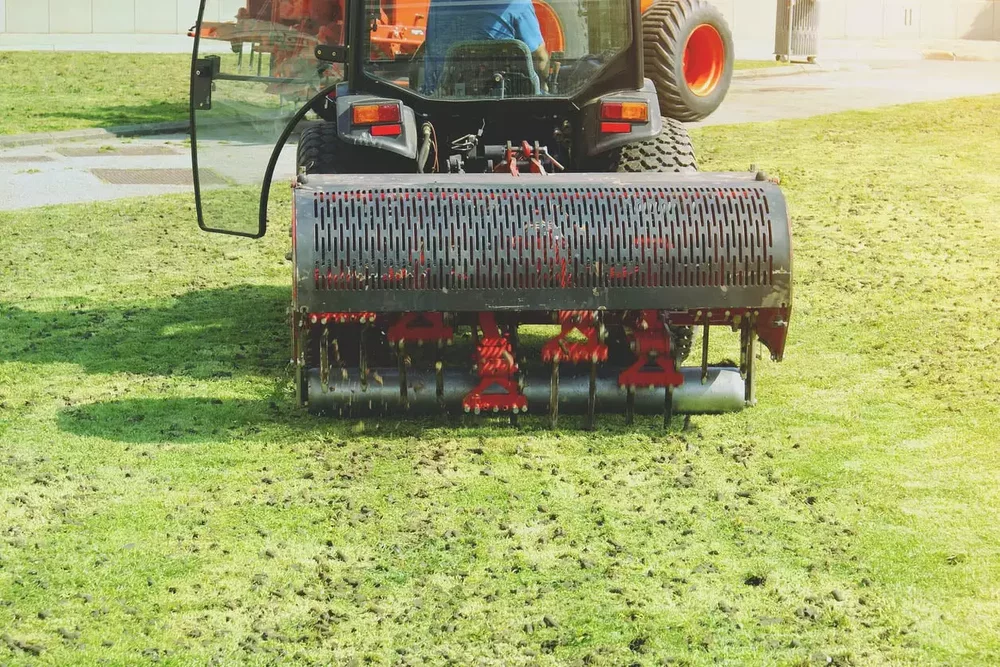
There are certain signs and conditions that indicate that it’s time for aeration. And you have to follow them to specify the right time for aeration.
The best time for aeration is when you have the grass in its peak growing period. Again different time is ideal for different types of lawn grasses. If you have a lawn with cool-season grass like Fescue or bluegrass, you should aerate it in early spring or early fall.
For a hot season grass lawn, like Buffalo grass or Bahia grass, you should try it in the late spring or early summer. In case you don’t know about the type of grass you have, you can follow the chart below.
| Cool-season Grass | Hot-season Grass |
| Kentucky Bluegrass | Zoysia Grass |
| Creeping Red Fescue | Bermuda Grass |
| Tall Fescue | St. Augustine Grass |
| Perennial Ryegrass | Buffalo Grass |
| Kentucky Bluegrass | Centipede Grass |
| Bentgrass | Bahia Grass |
Now your second concern is how often to aerate. This fact depends on the type of soil. If you have a lawn with sandy soil, you might have to aerate it twice or thrice a year. You can do it only once a year if you have a lawn with clay-based soil.
Types of Lawn Aerations
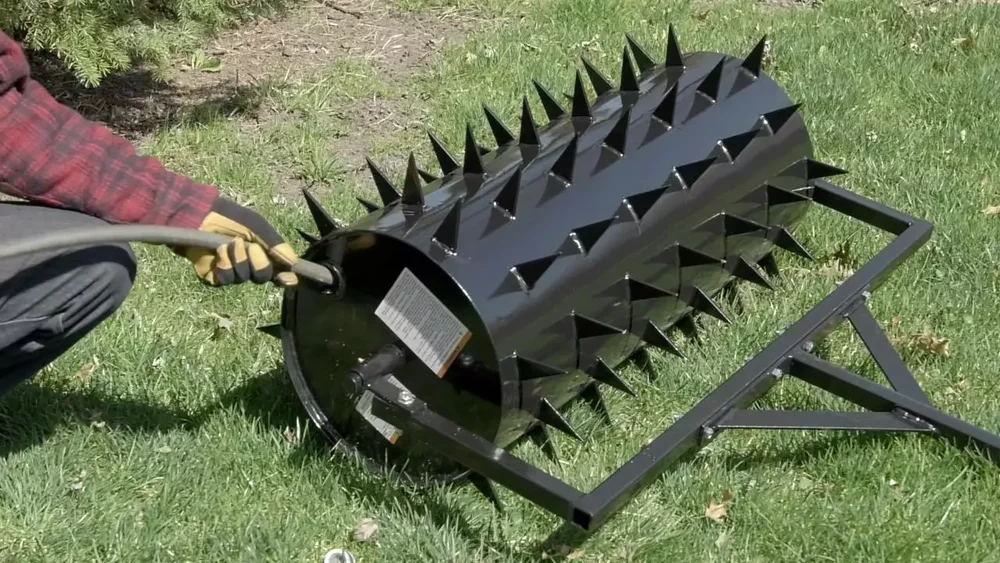
1. Core Aeration
If you are dealing with a heavily compacted lawn, core aeration is the most suitable type for you. In this system, 2-3 inch cores are used that are plugged into the ground. And maintaining the same consistency, they are removed every few inches. This method provides the easiest access to nutrients and water.
2. Liquid Aeration
The latest systemic aeration is commonly known as liquid aeration. There are different liquid aeration systems, such as one from BioGreen, N-Ext AIR-8™ + Iron8™. In this case, microscopic pores are created through the soul. They work following the formula of a sponge for absorbing retained water. The traditional aeration system permeates every several inches of soil. In contrast, liquid aeration permeates all the soil.
3. Spike Aeration
If you’re looking for the easiest aeration system, then spike aeration should be the one you should opt for. In spike aeration, the working system is slightly different. Here, instead of removing the soil, it pushes the dirt deeper into the ground. So the root gets some extra space and nutrients, and water can easily reach the root.
Most people follow these three most common and convenient lawn aeration systems. If your lawn soil is excessively compacted, you should go for the first type. The second type is costly but pretty much effective. But the thirst one is the easiest, but you shouldn’t try it at any rate if your lawn soil is compacted.
How to Aerate the Lawn?
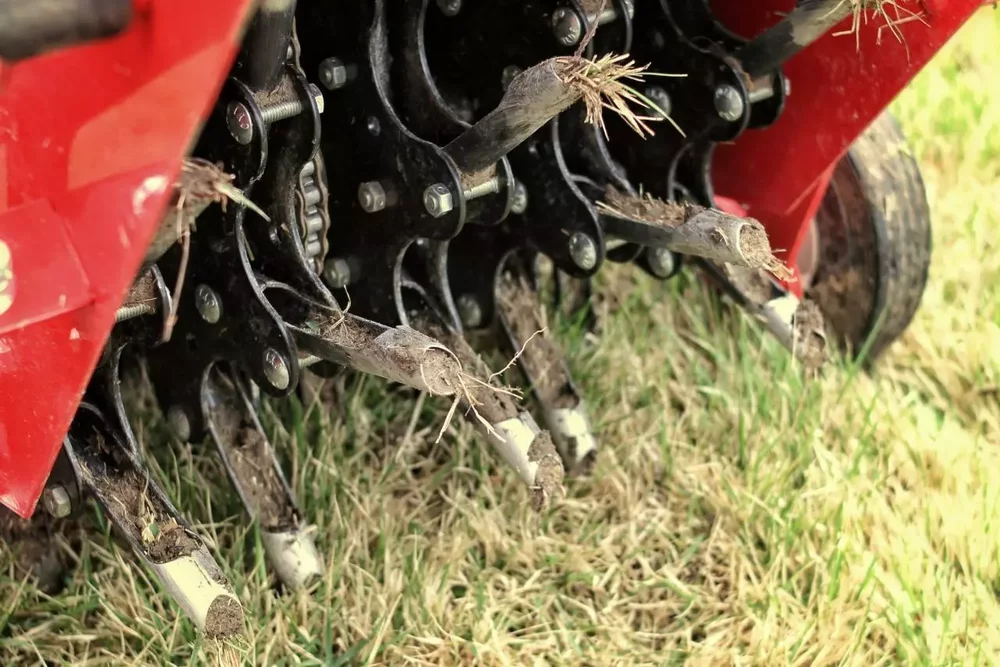
Step 1: Watering the lawn
You need some preparation before you aerate the lawn. You have to start it before the day you will aerate. The lawn ground must be thick and sustained. The day before you aerate, you need to water the lawn 1-inch deep. Make sure not to make it muddy. If it becomes muddy, you cannot use the machine properly.
Step 2: Setting Line for Aerating
The next day, you have to make sure that the lawn ground is soft enough but not soggy. And now, you have to mark the place where you want to aerate. It’s about making the line to use the machine. You can use the dusting powder and make some signs on the place from where you want to start and where you will stop.
Step 3: Check the Aerator Machine
Aerating is not a regular process. So most of the time, we generally don’t use it always. So, before using it, make sure that it works well and is clean. If you don’t have an aerator machine, you can rent one from any home improvement or agriculture store. It should cost you $50-$80 max.
Step 4: Running the Aerator
Now, you have to start the machine. As it runs, the spikes will pull cores of the lawn soil out of the ground. Normally the plugs will enter up to 3 inches deep into the ground. And the plug should have the capacity to pull out lawns every approximately 3 inches. Finally, it will leave the cores on the grass. It will automatically break down and spread nutrition into the ground.
You can either gather the cores from the lawn or just leave them over there. It won’t be an issue. Eventually, the cores can work as fertilizers and will soon be mixed with the ground. You have to water the lawn after you aerate it.
How to Aerate the Lawn Manually?
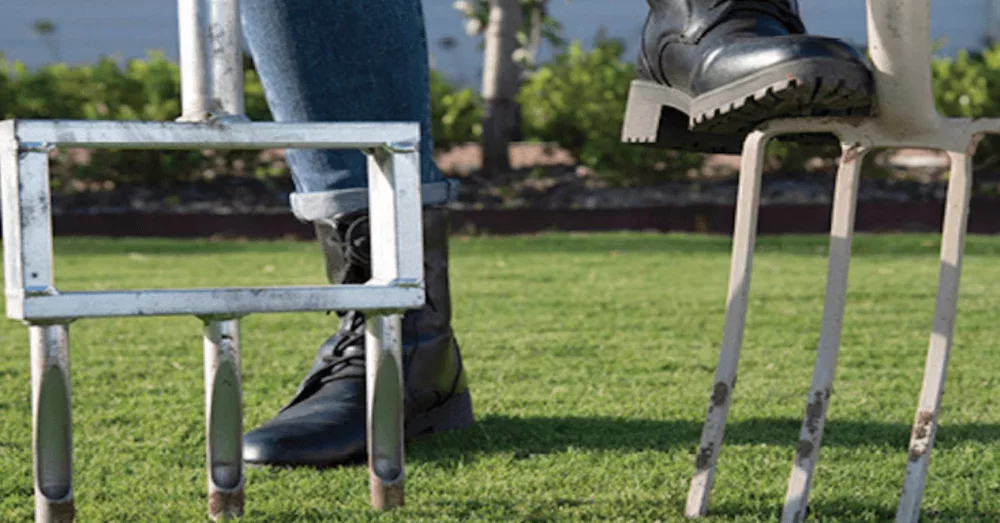
Method 1: Using Spading Fork
The very first method is the easiest one though a little bit time-consuming. To do it, you just need a spading fork. And then, you have to follow the below instructions to aerate your lawn.
- First, you need to set a certain area you should start and end.
- Now put the fork in the starting area and insert it into the lawn.
- Next, you have to create punch holes in the soil.
- If it doesn’t dig deeper, push it more using your boot on the foot bar.
- Make sure to give the fork a wiggle to get a better fracture.
- If you want to get more aeration, go over the particular area twice in different directions.
- Continue the process until the end and ensure not keep a big gap while moving to the next push.
Method 2: Using Core Aerator
As already mentioned, core aerating is the most effective aeration method. So, undoubtedly this one is the best method. For this method, you need a manual core aerator. And then follow the below instructions.
- First, get a hold of the handle using both hands.
- Place it on starting area and drive it deeper into the soil.
- Put your leg on the foot bar and push it harder if the soil is compacted.
- Continue the process until you finish running the aerator over the entire lawn.
Method 3: Using Spike Aerator
A spike aerator is a beneficial tool for aerating. But there are variations among the tools. If you can get a quality spike, it will make your task easier. Let’s see how to use it.
- Hold the handlebar of the spike strongly.
- Drive it through the lawn slowly.
- Put pressure where required.
- Continue aerating all over the lawn.
So, these are the easiest manual ways to aerate the lawn. But we always prefer to aerate it using the machine. If you don’t have one or are unwilling to use one, you can hire a professional lawn care service.
Post Aeration Lawn Care
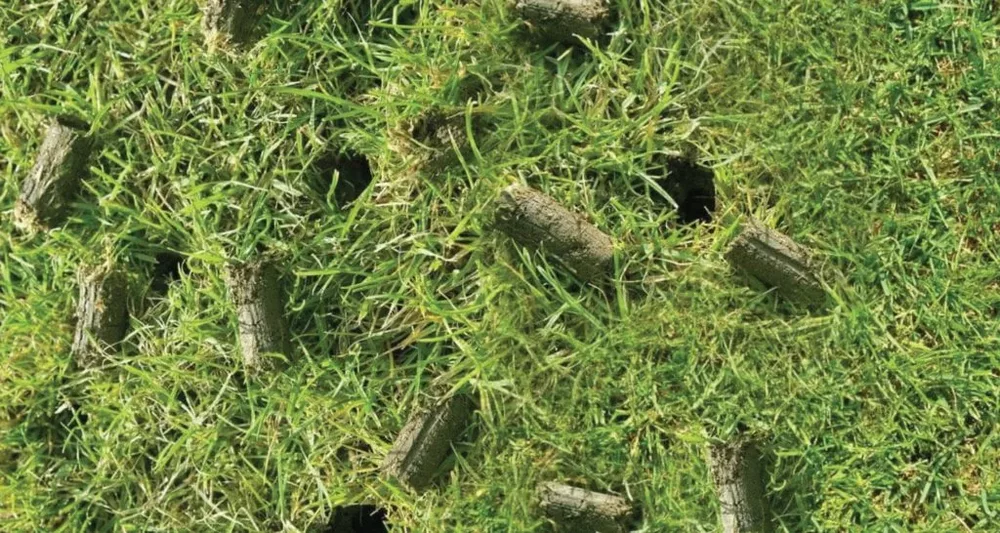
The time just after you aerate the lawn is the best time to fertilize your lawn. You can give the grasses a nutrient boost by applying compost fertilizer and manure. If your lawn needs extra seeds, it’s high time as well. You can overseed the lawn as during that time, growth will be at its peak.
FAQ
Q: What are the consequences of not aerating a lawn?
A: If you don’t aerate your lawn in time, the lawn will become lifeless. It is because the grass root won’t get enough nutrients, water, and air. The soil can easily get compacted, and it hinders essential nutrients from reaching the roots. So for sure, the growth will get hampered.
Q: What is the best manual aeration method?
A: Core aeration is the most effective way to aerate your lawn. In this method, even the harshly compacted soil becomes ideal for grasses. Plus, this method helps to spread nutrients as much as possible, unlike regular aeration methods.
Q: Can I aerate my lawn alone?
A: Yes, it is possible to aerate by yourself without help from others. You can try both automatic and manual aeration by yourself. But you will need certain tools such as a spiking machine, spading fork, or core aerator. Also, if you know how to run an aerator machine, you can rent it then.
Q: Is aerating the lawn worth it?
A: In most cases, aerating the lawn is worth it. But the appropriate answer depends on several factors, such as time, season, soil, and grass types. If the soil is extremely compacted, aeration is more necessary. However, if the soil isn’t that level harsh, then it might not be a helpful action. But, after a certain period, aeration is an obvious task.
Q: When shouldn’t I aerate the lawn?
A: You shouldn’t aerate the lawn at some specific times. Instead of bringing benefits, it can be even more dangerous. The following facts will tell you about it.
- Never aerate the lawn if it is infected with some contagious diseases like dollar spots.
- You shouldn’t aerate the lawn right after you sow seeds.
- You shouldn’t aerate the lawn right after you lay turf on the lawn.
- Never ever try Spike Aeration if your lawn soil is harsh and compacted.
Final Thought
As you have already seen, there are different types of lawn aerating systems, and you can aerate your lawn in many different ways. So you will no longer need to ask someone about how to aerate the lawn. You can do it all by yourself. But make sure to choose the right time and the right way.
You should check the type of lawn grass and choose the time to aerate the lawn. Among all the different types, we always suggest going for an automatic aeration system where you need a machine. This kind of machine can ensure equal aerating all over the lawn.
Now, let us know your point of view about aerating the lawn. Do you think it is essential? Please share your thought with us. Also, if you have any more confusion left, feel free to ask in the comment section. Thank you.
